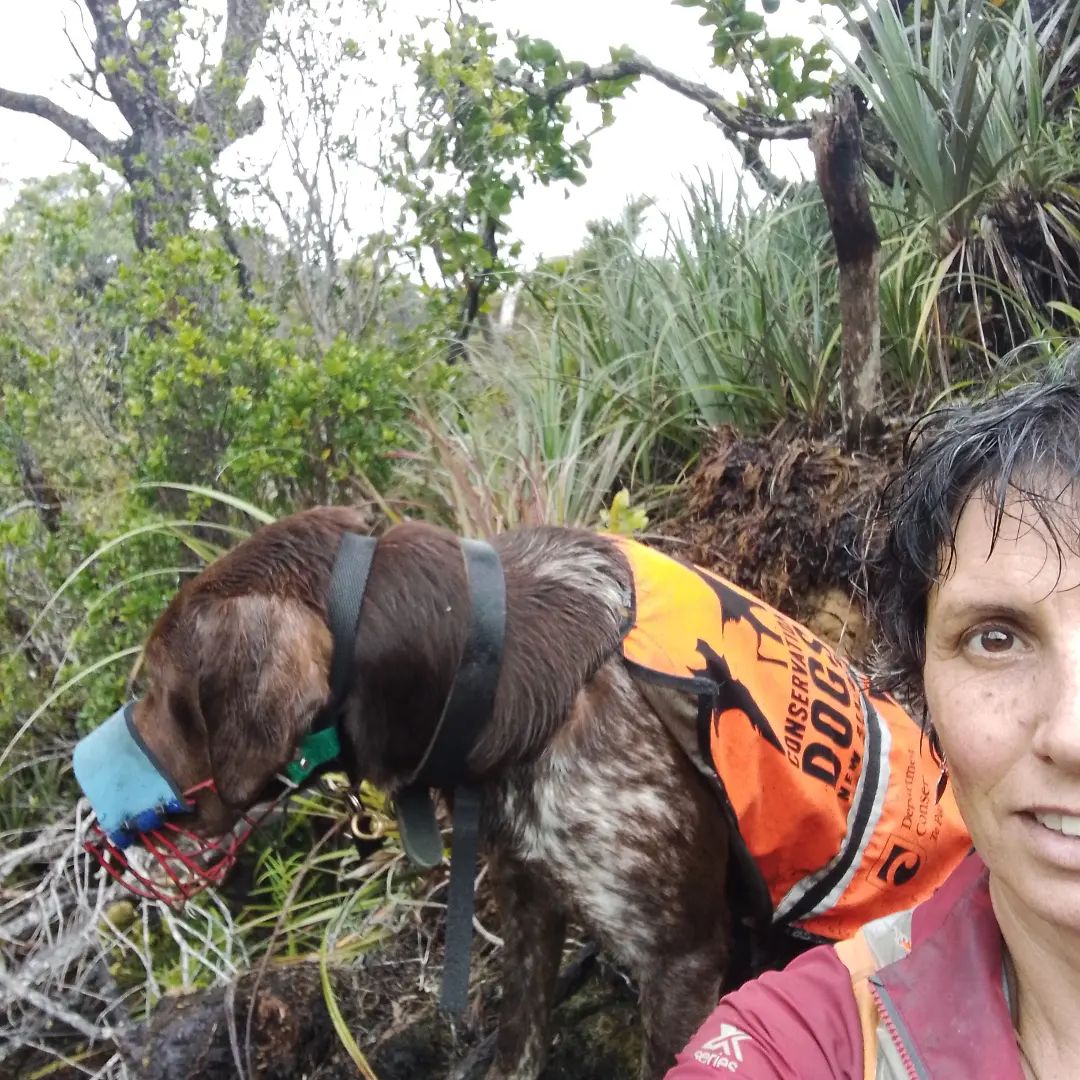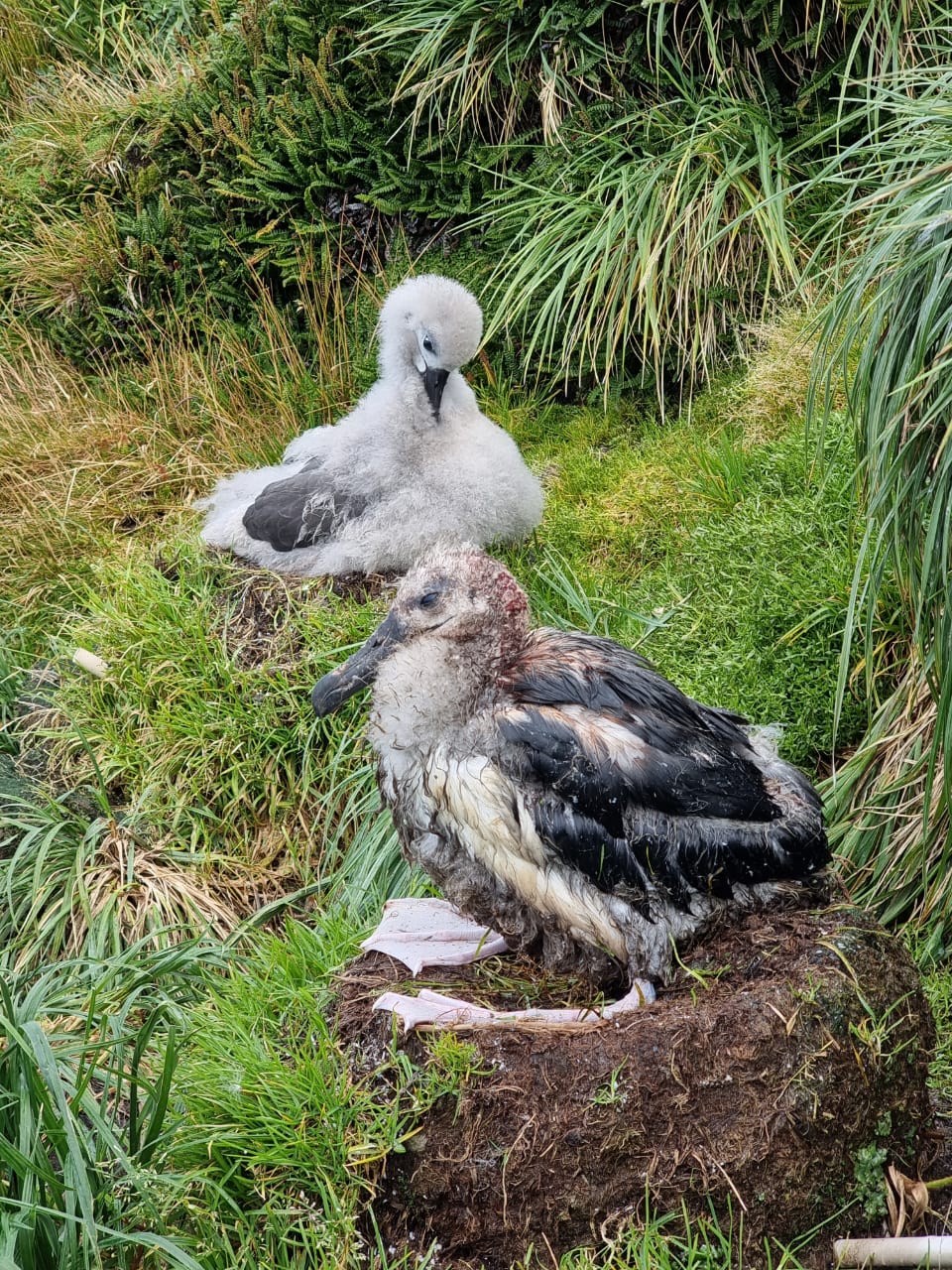 A badly wounded Grey-headed Albatross chick that will not survive the onslaught by Marion Island’s House Mice, 17 March 2024
A badly wounded Grey-headed Albatross chick that will not survive the onslaught by Marion Island’s House Mice, 17 March 2024
UPDATE: On a return visit to the study colony on 08 April, the wounded Grey-headed Albatross, illustrated above, was found to be still alive with its wounds healing. However, it wings were drooping and it was noticeably smaller than were surrounding chicks that have not been attacked by mice. So its survival to fledging is not assured. The other wounded chick seen on 17 March in the same study colony had not survived.
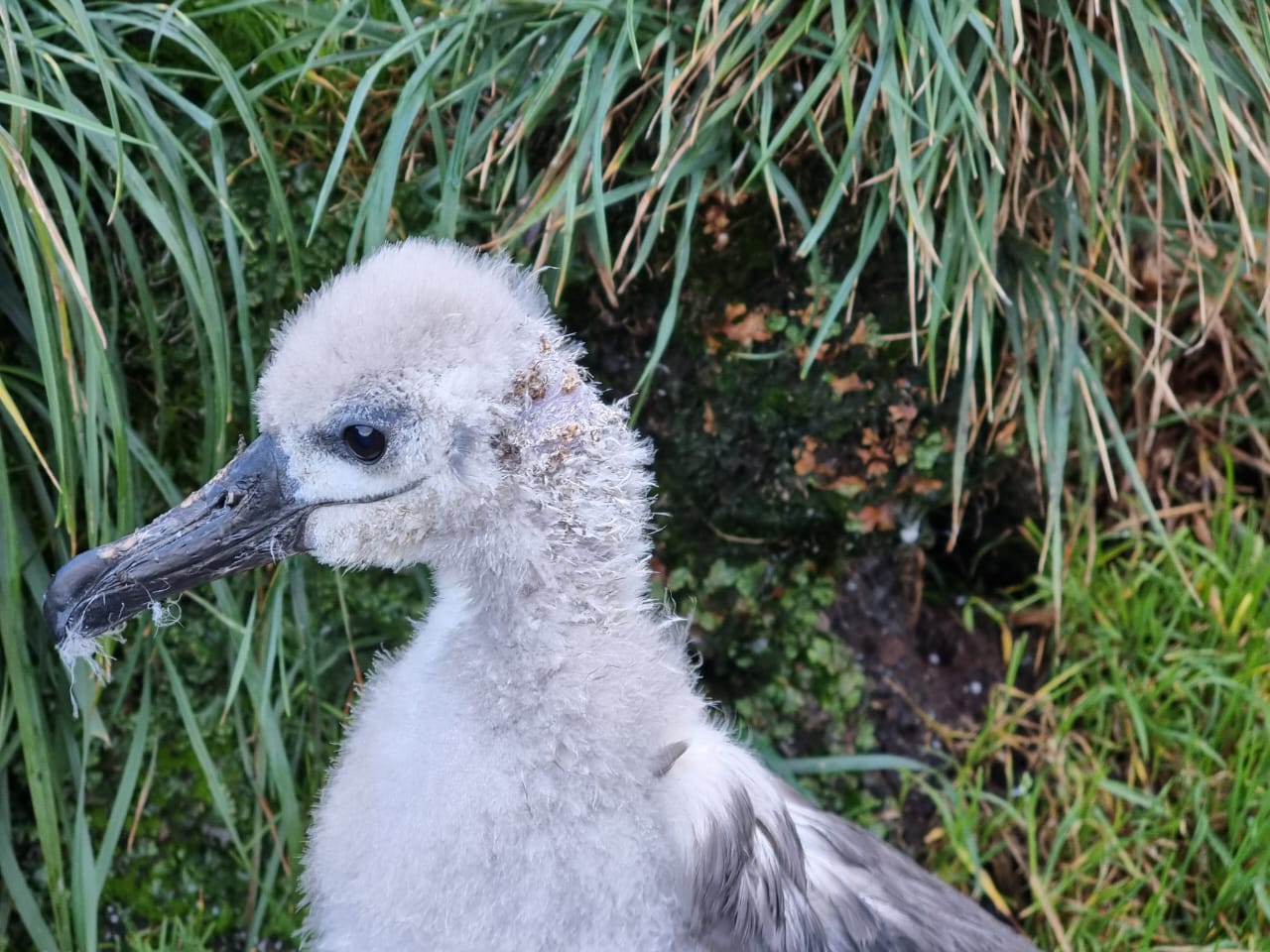
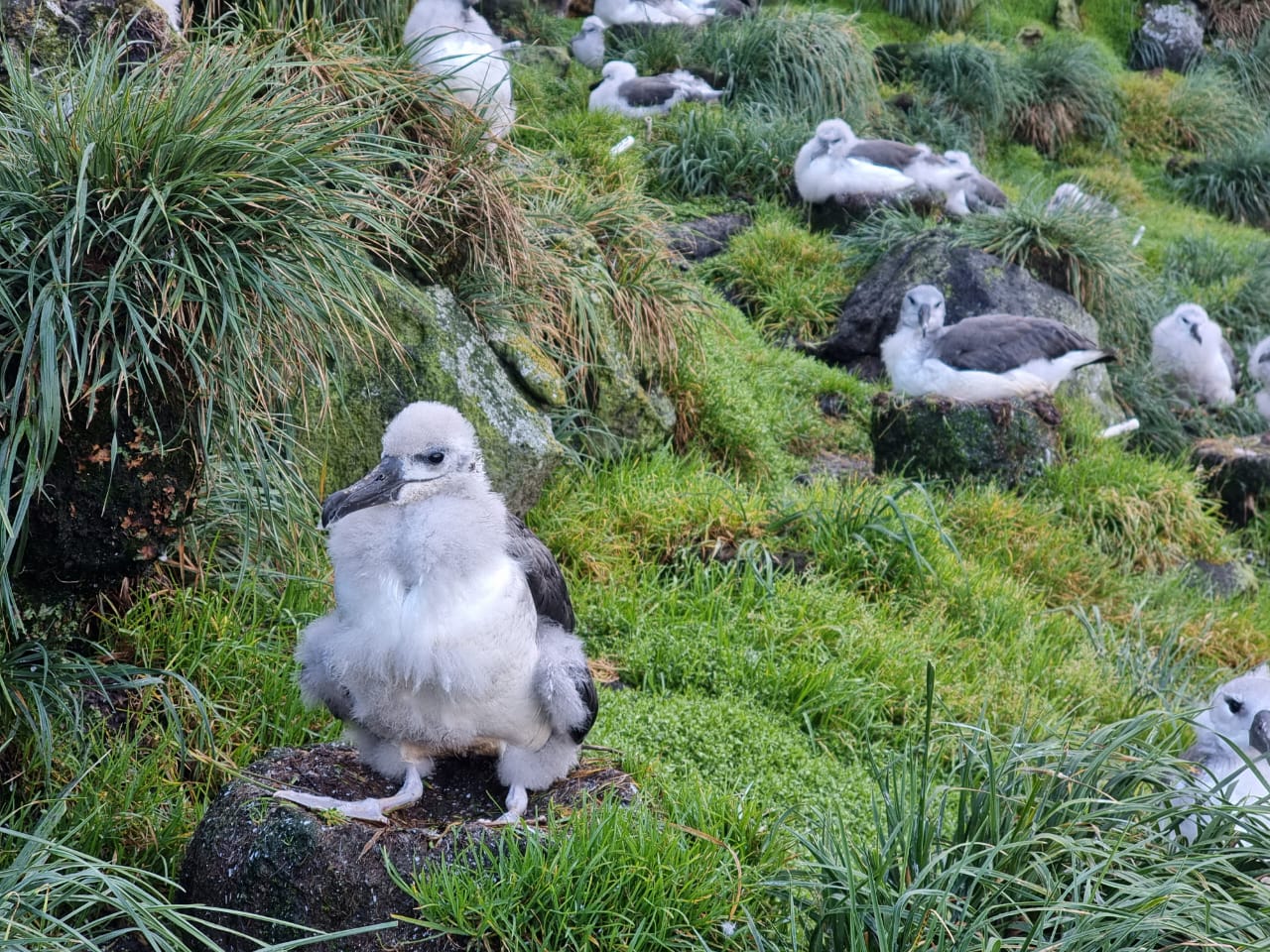
The wounded Grey-headed Albatross chick shows signs of healing, 08 April 2024
*************************************************************
Attacks by introduced House Mice Mus musculus on Marion Island’s albatrosses were first recorded in 2003 – and have continued every breeding season when checks have been made. First observed on downy chicks, in recent years depredations by the mice have commenced on adult birds incubating or brooding chicks. Last year’s report of the first observations of adult Wandering Albatrosses Diomedea exulans succumbing to attacks by mice was a further wake-up call, given the bird’s Vulnerable conservation status and that Marion supports a quarter of the world’s population of this iconic species. Also, the loss of an adult of a long-lived and slow breeding species such as an albatross is far more of a conservation concern than is the loss of a chick. And now it seems the current 2023/24 breeding season will give no respite to the island’s four species of breeding albatrosses.
This season, mouse attacks have commenced again on Marion’s eponymously named Grey-headed Albatross Ridge. On 17 March, island researcher Michelle Risi came across the severely wounded Grey-headed Albatross Thalassarche chrysostoma chick pictured above on a marked nest in one of the big colony’s long-term study clusters of breeding birds. This, and another wounded chick seen on the same day, are the first mouse attacks recorded on this Endangered albatross in the current breeding season. The chick had been videoed in full health a few days previously on 27 February. The next nest check comes in April, but the chick is not expected to survive. Eight chick carcasses were also counted at the time, all showing signs of having been scavenged by mice, which, in all likelihood, had commenced feeding on them while they were still alive, leading to their deaths.
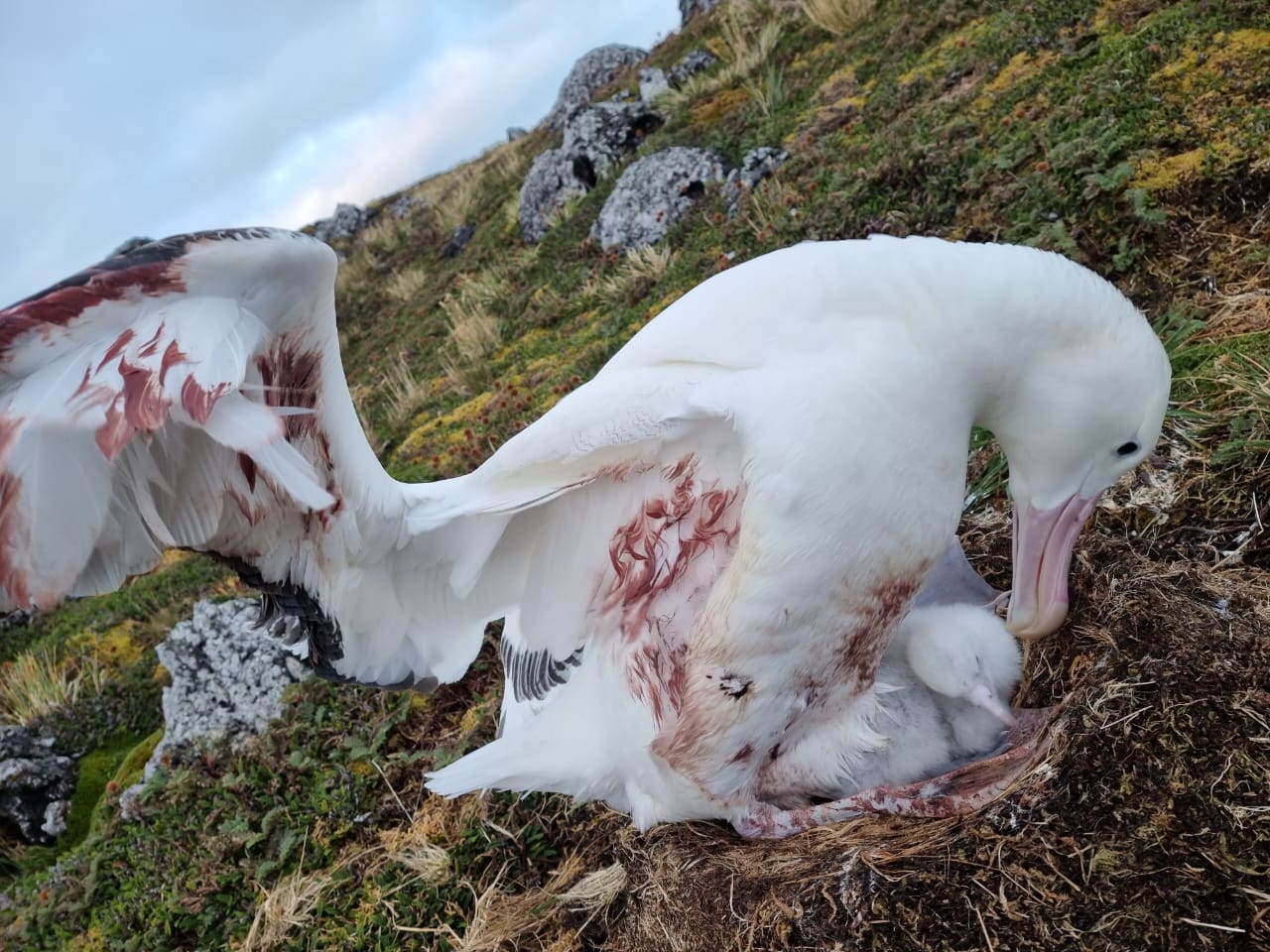
Mouse attack! A Wandering Albatross with a fresh wound continues to tend its chick, 28 March 2024
The mouse slaughter has not stopped with the Grey-headed Albatrosses. On 28 March, Michelle was in the north of the island near Cape Davis conducting nest checks on Wandering Albatrosses when she came across and photographed a wounded male bird brooding its downy chick. Fortunately (so far) the chick had not been attacked by mice. The locality was not that far from where the dead adult Wanderers had been seen in April last year. Whereas the brooding bird will be relieved by its partner, and if still alive, have an opportunity to recover and heal at sea, it seems likely the breeding attempt will fail, even if the adult escapes death.
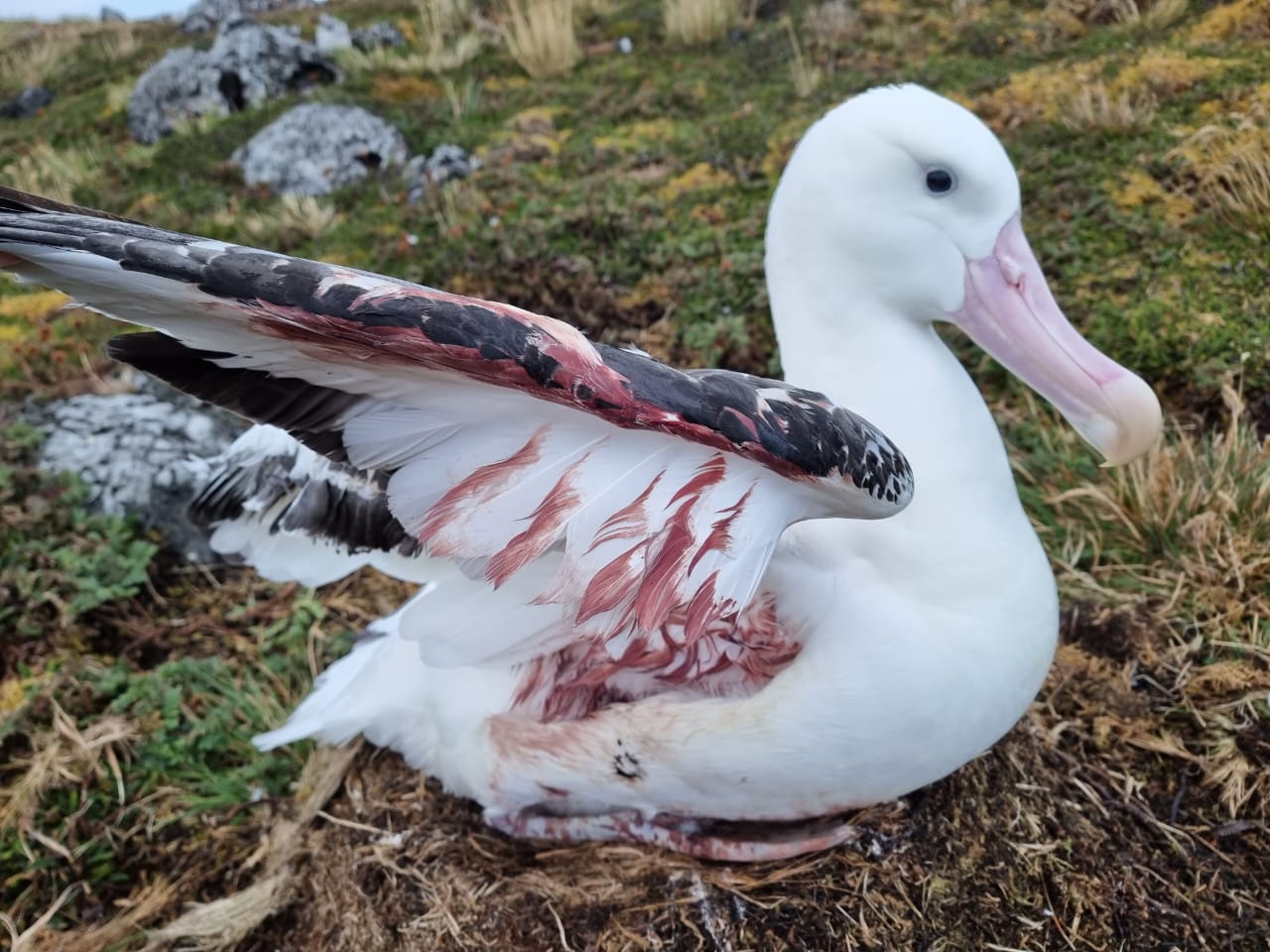
The brooding Wandering Albatross displays its wound, 28 March 2024; all photographs by Michelle Risi
The Mouse-Free Marion Project is working towards seeing the end of the island’s mouse plague.
John Cooper, Emeritus Information Officer, Agreement on the Conservation of Albatrosses and Petrels & Michelle Risi, Marine Apex Predator Research Unit, Nelson Mandela University, Gqeberha, South Africa, 04 April 2024, updated 11 April 2014

 English
English  Français
Français  Español
Español 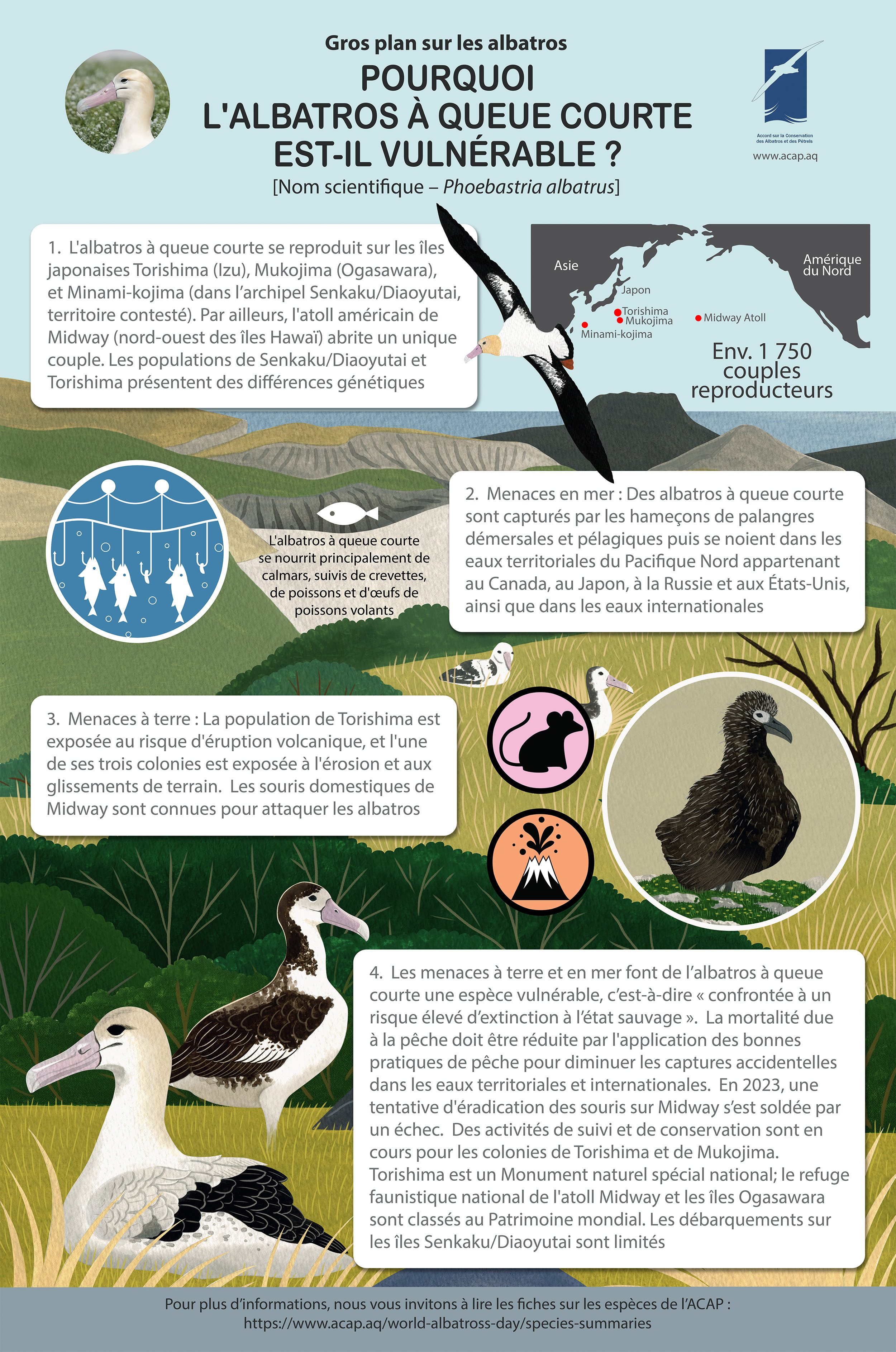


 Woody, the Department of Conservation's Stoat-hunting dog, was deployed to Great Barrier Island, photograph by the Auckland Council (
Woody, the Department of Conservation's Stoat-hunting dog, was deployed to Great Barrier Island, photograph by the Auckland Council (